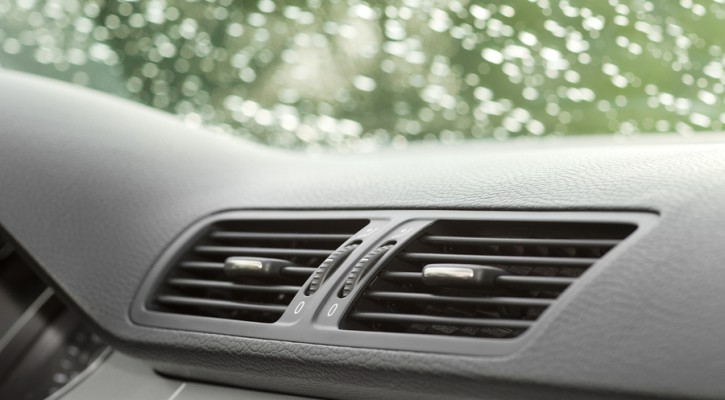
Five Car Components to Protect This Summer
June 9, 2014
Don’t let summer eat your car! Park it in the shade whenever possible to protect vital car components from the effects of extreme heat. During the hottest days of summer, these are the big five things to look out for when temperatures soar into the triple digits.
All drivers can benefit from a few basic summer car care tips. Learn the big five to help your vehicle survive this summer’s heat wave:
Gas
Don’t worry, you’re probably not going to blow up or anything. However, driving and fueling up during the hottest time of day (around 2 PM – 4 PM) will waste much more gas and seriously drain your wallet.
Battery
High temperatures destroy car batteries. The heat causes battery acid to evaporate, dramatically shortening its lifespan and leaving drivers stranded during the hottest days of summer. By parking in the shade, regularly testing your battery, and replacing batteries older than 3 years, you can prevent the hassle of suffering through a dead battery. Also, it couldn’t hurt to always keep a set of jumper cables handy.
Windshield Wipers
Yes, your windshield wipers can melt – well, sort of. Triple digit temperatures cause wipers to get stuck to the glass, a result of slight deterioration caused by extreme heat. This can be dangerous if you happen to press your windshield washer button while driving and the wipers fail. However, you can prevent wipers from sticking by simply using them on a regular basis. So go ahead press that windshield washer button when you start the car each morning. That way you’ll have a clean windshield and reliable wipers.
Tires
The risk of catastrophic tire failure is much higher when temperatures soar. In mild weather, a damaged or improperly inflated tire may just go flat, while in hotter weather it could cause a more serious blowout. Catastrophic tire failure often results in more dangerous auto accidents and even rollovers and deadly collisions. By checking for tire damage and proper inflation regularly, drivers can prevent suffering through a summer tire blowout. Since temperatures can vary up to 30 degrees in the summer – from a 100-degree day to a 70-degree night – it’s important to check your tire pressure daily.
Transmission
Because summer time is also play time, many drivers hook up the boat or camper trailer during this time of year. However, many new drivers fail to check and see if their transmission can handle the strain. Pulling too much weight can be a transmission killer. However, a little bit of towing knowledge and some auxiliary transmission oil cooler protect your vehicle when towing the boat or jet ski. It’s best to leave the bigger, heavier trailers to heavy-duty trucks.

Here Comes the Sun: Summer Car Care Tips
June 7, 2014
That great ball of fire in the sky, our beloved sun, seems to be growing hotter by the day. Its awesome power can cause some serious damage to vehicles in the summer – from cracked paint to smoking engines – so it’s important to know a few basic summer car care tips.
Don’t Let Your Battery Burn Out
Extreme heat can destroy your vehicle’s battery. Hot temperatures cause battery fluid to evaporate, and that interior damage will eventually lead to a dead battery, leaving you stranded (possibly with a car full of quickly-spoiling groceries). Drivers can prevent this inconvenience by taking a few precautions:
- Keep the top of the battery clean. Dirt and dust become conductors, which drain battery power. Plus, the corrosion accumulated on battery terminals becomes an insulator, which inhibits current flow.
- Check battery fluid regularly. If you have the type of battery that needs to be topped off, check it often during these high-temperature summer days. Add distilled water when necessary.
- Test battery at every oil change. Most automotive shops and some auto parts stores have electronic testers available that can give you a snapshot of your battery’s condition.
- Replace battery on it’s way out – not after it dies. Or better yet, replace your battery every 2 – 4 years (or whenever the warranty is up) and save yourself some trouble.
Keep it Clean
Dirt, sand and debris on the surface of your car and engine can cause permanent damage. Visit the car wash often, especially after a trip to the beach. Be sure to use engine cleaner and finish with coat of wax to protect your paint from the sun, as well as repel future dirt, debris and water spots.
Park it in the Shade
This is an obvious one, however, finding that shade is sometimes very difficult. When there is no available tree cover or parking garages, you can use timing and infrastructure to find shade on the hottest of days. In the AM, drivers can find shade on the west side of taller buildings, and in the PM, the shade will be on the east side of buildings.
Windshield Cover
Using a windshield sunshade will keep your car’s interior much cooler. It also prevents deterioration of the dash board, steering wheel, center console and car seats.
Crack Your Windows
This little bit of ventilation makes a huge difference in your vehicle’s interior temperatures. Remember, cracked windows will prevent cracked car seats.
Keep these pointers in mind, and this summer won’t be too terribly rough on your ride. Knowing about summer car care tips is a good way to help your vehicle live a long and happy life.

Tips To Cool Down a Hot Car Down Quickly
June 5, 2014
Driving an oven is dangerous. Follow these tips on how to cool down a hot car during the sweltering summer months:
1. Roll down all the windows. For better circulation, don’t roll them down together, but one after the other.
2. Crank up the air-conditioner. Be sure to put it on the fresh air setting, not the recirculate setting since the temperature outside will be much cooler.
3. Drive for a minute before rolling up the windows to allow all the hot air to escape.
4. Once the air from the A/C vents feels cooler than the air outside, it’s time to roll up the windows.
If your car is too hot to handle safely (the metal causes third-degree burns, the seats are melting, and the steering wheel is too hot to touch), then try this nifty trick from LifeHacker before hitting the road:
http://lifehacker.com/5823069/how-to-quickly-cool-down-your-cars-oven-like-interior
This trick from fine folks at lifehacker may look a little funny, but it’s one of the fastest ways to cool down a hot car when summer heat really gets it baking.

Gas Mileage Dilemma: AC and MPG
June 3, 2014
There has been a shift in the age-old debate over air-conditioning and gas mileage.
Once upon a time, drivers would roll down their windows on a hot day. They assumed that it would waste less gas than running the air conditioner. Then, one hot summer day, some “experts” told the public that driving with the windows up and the air-conditioning on would result in better gas mileage than rolling the windows down. Their argument: rolling down the windows created more drag, and that resistance used more gas than the AC.
However, it appears that this argument was based more on theory than fact (or possibly they were just sick of being hot). Years of testing by actual drivers, as well as studies done by Edmunds.com, the Society of Automotive Engineers (SAE), and Consumer Reports revealed that gas mileage is actually better with the windows down and the AC off. And so, the debate over AC and MPG wages on.
Of course, this doesn’t mean that you have to suffer through the heat wave without any air-conditioning. It would definitely be less cost efficient to have a heat stroke and crash your car than to simply turn on the AC every once in a while. However, if you want to get the most out of your gas mileage then consider cruising with the windows down and dressing for the weather.
For more information on air-conditioning and gas mileage, see the full story below:
http://greenliving.about.com/od/travelinggreen/a/Air-Conditioning-MPG-Gas-Mileage.htm

Tire Safety 101
June 2, 2014
It’s National Tire Safety Week all week long, so today we’re going to break down the basics of tire safety for your cars and trucks.
Tires keep us moving, help us stop, maintain traction and play one of the most important roles in keeping control over our vehicles. Without reliable, properly-inflated tires, cars and trucks can quickly turn into rolling death machines. And, even a slight drop in tire pressure can really drag our gas mileage down. So, it’s important to get in the habit of practicing proper tire safety.
1. Check tire pressure AT LEAST once a month.
Tires typically drop about 1 psi per month, and 1 psi for each 8-degree loss in ambient temperature. In many places across the U.S., temperatures can range far greater than 8-degrees in a single day. So, if your region is experiencing drastic temperature changes, it couldn’t hurt to check tire pressure weekly or even daily.
Uneven tire pressure immediately affects handling and control, as well as gas mileage. However, the long term effects can be even more concerning. Tire life decreases with poorly inflated tires because the tread wears out quicker on the outer edges, as well as increases stress on the tire as a whole through flexing and overheating.
2. Inspect tires AT LEAST once a month.
This is easy. Just do a quick walk-around, looking for excessive tread wear, cracks, bumps, chunking, punctures, or debris (such as screws & rocks). If you notice excessive tread wear, it could be a sign of steering or suspension misalignment.
If you notice tire damage, it is easy & cheap to take it in for repairs.
3. Maintain tires in proper balance.
Ever hear a thumping noise when driving down the highway? It could be an out-of-balance tire. This can cause uneven tread damage as well as an uncomfortable and embarrassing ride. If this occurs, have your tires dynamically balanced by an experienced technician right away.
Tires should always be balanced when first installed, and whenever remounted.
4. Rotate tires every 6,000 miles.
This is a general rule of thumb, though different vehicle manuals may specify different miles.
5. Maintain steering and suspension in proper alignment.
Many tire service shops offer a free alignment with the purchase of new tires. This is important because misalignment can cause rapid tire wear, as well as affect steering and stability of the vehicle. If you notice that your car pulls to one direction or the other, it may be time for an alignment.
6. Never overload your vehicle.
Overloading is the second leading cause of tire failure, just behind underinflation. Check the tire sidewall for maximum load range.
7. Don’t overheat tires.
Heat is another big tire killer. High speeds, high loads, underinflation, course pavement and aggressive driving all increase tire temperatures. This drastically decreases tread life and damages tire structure.
8. Install tires in matched pairs or complete sets.
When replacing tires, buy the same size, brand and type. If you can’t afford a complete set, then try to at least get a pair and install together as rear wheels. Even if the vehicle is FWD or AWD, putting new tires on the front and worn tires on the back will cause instability.
9. Buy the right tires for your vehicle and location.
All-season tires may work well in various locations, however, specialized tires will perform better for driving in rain, snow, ice, off-road and long distance conditions.
10. Replace tires BEFORE they blowout.
If tire tread is running low, it’s time for the old penny test. The Lincoln’s head on a penny can be substituted for a tire tread depth gauge as tires wear to the critical final stages. Place a penny into several tread grooves across the tire. If part of Lincoln’s head is always covered by the tread, you have more than 2/32″ of tread depth remaining. If Lincoln’s head is not covered, then a blowout is imminent.
Now that you know a thing or two about tires, practice the wisdom, spread the wisdom, and be a knowledgeable tire-safety advocate.

Teen Drivers’ Summer Survival Guide
May 29, 2014
With the passing of Memorial Day weekend, teens now face the 100 deadliest days of driving this year. The school year comes to an end, summer begins and traffic fatalities sky rocket through June, July and August. Why?
One reason is simple: there are more teen drivers (aka novice drivers) on the road. In fact, one of the greatest dangers to teen drivers is other teen drivers. One way to avoid collisions with other teens is to take extra caution when driving through the usual hangouts, especially the mall.
Having multiple passengers can also increase a teen driver’s crash risk. The combination of multiple conversations, phone usage and loud music is common, and all this commotion in a confined space can easily lead to distracted driving accidents. As the driver, a smart teen should make it a priority to get everyone from point A to point B without crashing or getting pulled over. That will earn much more peer respect than driving distracted, carelessly or recklessly and putting everyone in danger.
Another common cause of summer traffic fatalities is alcohol. Not only must teen drivers steer clear of drinking while driving, they must also steer clear of other drivers under the influence. By avoiding alcohol-prone areas such as bar districts and party spots, teen drivers can manage to make it through the summer without an alcohol-related accident.
Since traffic fatalities are a leading cause of teen death, and fatality rates are 3X as high during the summer months, it is important for teen drivers to take these tips to heart.
Engine Rebuild: A Vivid Time-Lapse
May 28, 2014
Not many new drivers would attempt such a feat, but there is incredible value in learning the art of the engine rebuild. Done properly, and with the right guidance, this experience can make teens more aware of how their car works, how to take better care of it, and how to fix it without breaking the bank. It can also teach life-long lessons such as patience and ingenuity.
If you’re up to the challenge, consider investing in a vintage ride, a fixer-upper, or an old fashioned clunker to learn how engines work. But, be forewarned, it is NOT EASY.
Witness the beauty of one engine enthusiast’s time-lapse rebuild:

Motorcycle Awareness for the Clueless – Lesson 13
May 26, 2014
Lesson 13: Save Lives by Keeping the Roads Clean
Road debris is no big deal for people in cars and trucks, but it can result in a fatal crash when faced by unsuspecting bikers. Trash, gravel, and other common hazards can often be prevented by drivers who strive to keep the roads clean. So, take these tips to heart to save lives this riding season.
Keep gravel off the road by keeping your tires on the asphalt. Drifting into the shoulder can cause your tires to kick up gravel on the pavement, which can then cause traction issues for motorcyclists.
When hauling trash, yard trimmings or any household goods, be sure that everything is strapped down securely. Keep an eye on your load while driving to make sure that nothing comes loose during the move. A fallen cedar branch or lost bedside table could prove fatal for any bikers behind you.
Finally, drivers can keep the roads clean by following this age-old rule: DON’T BE A LITTERBUG! Keep your food, drinks, cigarette butts and other trash in the car until you reach a destination with a trash can.

Motorcycle Awareness for the Clueless – Lesson 12
May 23, 2014
Lesson 12: Play it safe, give bikers more space!
Welcome back for the 12th lesson in our Motorcycle Awareness Month series.
There are many reasons to give motorcyclists more space when following in traffic. For one, they can brake quicker. Motorcycles don’t have as much weight, so they tend to slow down at a much quicker pace than 4-wheeled vehicles. They also face more hazards, and are forced into situations that require quicker emergency braking more often. Road debris, distracted drivers, potholes and other traffic dangers are a constant threat when riding a motorcycle, so the possibility for fast deceleration is always there.
Motorcyclists also tend to notice and react to changes in traffic more quickly than drivers. Because they aren’t surrounded by four doors and a roof, they are more alert. Therefore, a biker may begin braking for a red light or stop sign long before other drivers even notice the intersection.
Since fender benders can result in a fatal injury when the collision involves a motorcycle, it is best to play it safe and allow plenty of following distance. So, don’t forget this most basic of motorcycle awareness lessons: Give motorcyclists more space!

